Explore Gyeongju - South Korea Travel, Asia
Gyeongju, often referred to as "the museum without walls," located in the southeastern corner of North Gyeongsang Province, South Korea. It is situated approximately 370 kilometers (230 miles) southeast of Seoul and 55 kilometers (34 miles) east of Daegu. The city covers an area of about 1,324 square kilometers (511 square miles) . As the former capital of the ancient Silla Kingdom, which ruled much of the Korean Peninsula from 57 BC to 935 AD, Gyeongju boasts a rich cultural heritage spanning over 1,000 years. The city is renowned for its exceptional concentration of archaeological sites, Buddhist art, and well-preserved historical artifacts.
Population: approximately 250,000 as of 2024.
Economy: Gyeongju's economy is diverse, primarily driven by tourism, manufacturing, and agriculture. As a major tourist destination, Gyeongju attracts visitors due to its rich historical heritage and archaeological sites, contributing significantly to the local economy.
Landmarks: Bulguksa Temple, Seokguram Grotto, Gyeongju National Museum, Tumuli Park, Gyeongju Historic Areas, Yangdong Folk Village.
South Korea
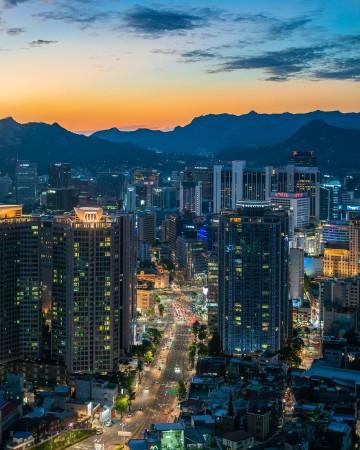
Overview of Gyeongju
History & Culture Influence
Gyeongju's history dates back to the 2nd century BC, when it was established as the capital of the ancient Silla Kingdom. The city was home to the Silla court and aristocracy, and it became a center of art, culture, and learning. Many of Gyeongju's most famous historical sites, such as Bulguksa Temple and Seokguram Grotto, were constructed during this golden age of the Silla Kingdom. However, Gyeongju's prosperity was not to last. In 935 AD, the Silla Kingdom fell to the rising power of the Goryeo Dynasty. Despite no longer being the capital city, Gyeongju has left an indelible mark on Korean culture and history. The city is often referred to as "the museum without walls" due to its wealth of archaeological sites and cultural properties. Many of these sites, such as the Bulguksa Temple and Seokguram Grotto, have been designated as UNESCO World Heritage Sites.
Interaction with The Locals
While Gyeongju has a predominantly Korean population, the city is home to a diverse mix of ethnicities. This diversity is a result of its history as the capital of the Silla Kingdom, which ruled over the Korean peninsula for nearly a millennium. The city's long history has attracted people from various backgrounds, contributing to its vibrant cultural landscape. The locals are known for their hospitality and eagerness to share their rich cultural heritage with tourists. One of the best ways to interact with locals is by visiting Gyeongju's traditional markets. The vendors and shopkeepers are friendly and welcoming, often more than happy to chat with visitors and share their stories. Engaging in conversations with them not only provides an authentic experience but also offers insights into the local culture and products.
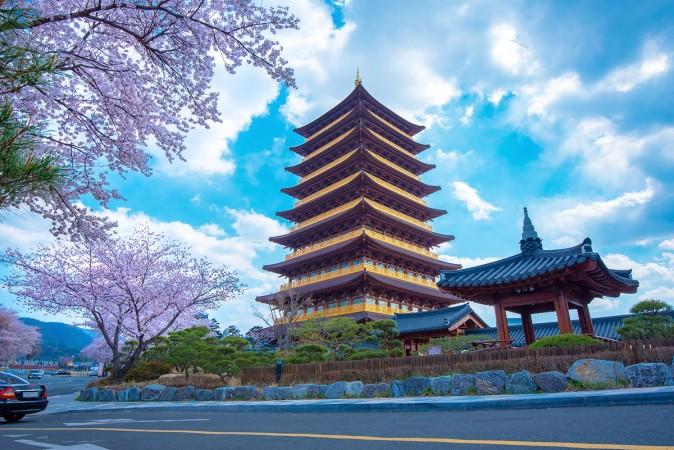
Gyeongju World Expo, Gyeongju, South Korea - © ST_Travel
Top attractions in Gyeongju
As the former capital of the Silla Dynasty, which ruled much of the Korean Peninsula for nearly a millennium, Gyeongju offers visitors an unparalleled journey through time. This enchanting destination in South Korea's North Gyeongsang Province boasts an impressive array of UNESCO World Heritage sites, breathtaking landscapes, and living traditions that continue to thrive.
- Bulguksa Temple: Bulguksa Temple is one of Korea's most important Buddhist sites and a UNESCO World Heritage landmark. Visitors can explore stunning stone pagodas, intricate temple architecture, and serene gardens. For a more immersive experience, temple stay programs are available.
- Seokguram Grotto: Seokguram Grotto, located near Bulguksa Temple, houses a magnificent Buddha statue inside a man-made cave. Known for its sophisticated design, the grotto offers a peaceful environment where visitors can appreciate the beauty of Buddhist art and architecture.
- Gyeongju National Museum: The Gyeongju National Museum is home to an extensive collection of Silla Dynasty artifacts, including the iconic Emille Bell and the Golden Crown of Silla. Visitors can explore Korea’s ancient history through interactive exhibits and guided tours.
- Daereungwon Tomb Complex (Tumuli Park): The Daereungwon Tomb Complex features the grand burial mounds of Silla royalty. Cheonmachong, also known as the Heavenly Horse Tomb, is open for visitors to explore the inner chambers. The park is especially picturesque during cherry blossom season.
- Donggung Palace and Wolji Pond: Formerly called Anapji, Donggung Palace and Wolji Pond is a restored royal palace complex known for its stunning night views. The illuminated reflections on the pond create a magical experience for evening visitors, especially in the summer.
- Namsan Mountain: Namsan Mountain is often referred to as an "open-air museum" due to its countless Buddhist sculptures, pagodas, and carvings. It offers various hiking trails, leading to breathtaking viewpoints and historical landmarks scattered throughout the mountain.
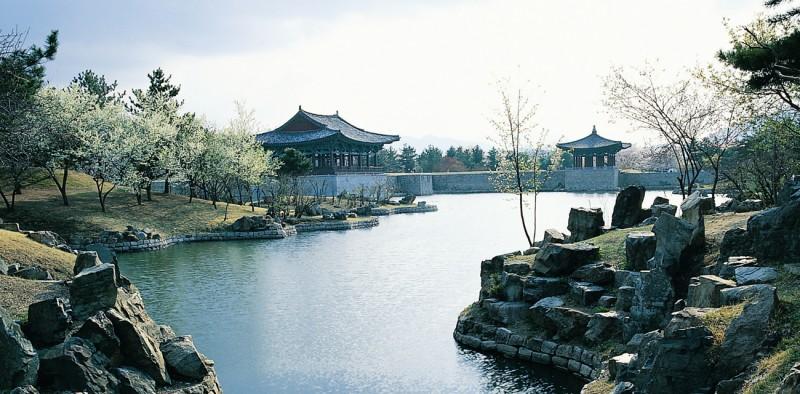
Donggung Palace & Wolji Pond - © IDN Times
Must-Try Dishes in Gyeongju
If you're visiting Gyeongju, don't miss the chance to try some of its must-try local dishes, each reflecting the city's rich history and culinary traditions.
- Gyeongju Bread (Gyeongju Ppang): Gyeongju Bread is a local specialty that dates back to the Silla Dynasty. These small, round breads are filled with a sweet red bean paste and have a distinctive shape resembling a pagoda or crown, representing the city's rich history. They are a popular snack and souvenir for visitors to Gyeongju.
- Gyeongju Jjim (Gyeongju-style Steamed Beef): Gyeongju is known for its high-quality, tender cuts of beef that are fit for a Silla king. Gyeongju Jjim is a slow-cooked, steamed beef dish that showcases these premium ingredients. The beef is marinated in a savory sauce and steamed until it melts in your mouth. It is often served with rice and banchan (side dishes).
- Gyeongju Tteok (Gyeongju-style Rice Cakes): Gyeongju Tteok are traditional rice cakes that come in various shapes and flavors. They are made from glutinous rice flour and often include ingredients like red beans, sesame seeds, or jujube. These chewy, sweet treats are a beloved part of Gyeongju's culinary heritage and are commonly enjoyed during festivals and celebrations.
- Gyeongju Beopju (Gyeongju Rice Wine): Gyeongju Beopju is a traditional rice wine with a history dating back to the Silla Dynasty. This clear, slightly sweet and sour wine is made using a unique brewing process that involves fermentation in earthenware pots. It is a popular accompaniment to meals and a great way to wind down after a day of sightseeing in Gyeongju.
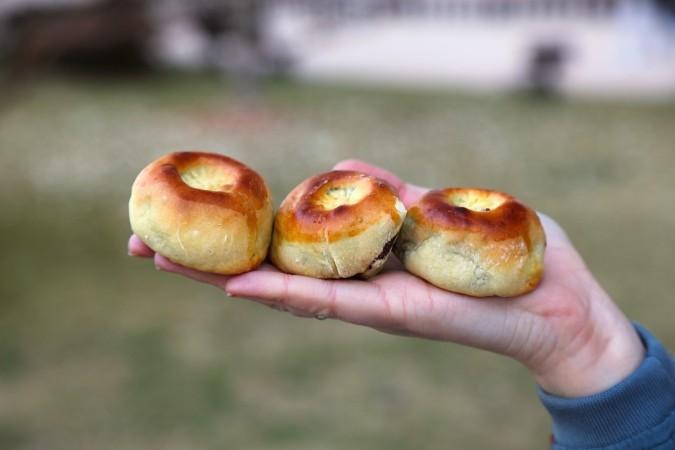
Gyeongju Ppang - © Tupungato
Festivals & Local Celebrations
Gyeongju Cherry Blossom Festival
The Gyeongju Cherry Blossom Festival celebrates the stunning bloom of cherry trees, particularly around Bomun Lake and the Daereungwon Tomb Complex in late March to early April. Visitors can enjoy a picturesque setting filled with over 9,000 cherry trees, art exhibitions, live music, and cultural performances. The festival atmosphere is festive, making it a perfect time for photography and strolls among the blossoms.
Gyeongju World Culture Expo
The Gyeongju World Culture Expo is a large-scale cultural event that promotes global harmony through various artistic expressions. The expo features performances, exhibitions, and workshops that highlight the cultural diversity of different countries. Visitors can expect to experience a wide range of cultural activities, including traditional music, dance, and art displays, making it a vibrant celebration of global culture.
Silla Cultural Festival
The Silla Cultural Festival commemorates the legacy of the Silla Kingdom in October, which ruled for nearly a millennium. This festival includes traditional performances, reenactments of historical events, and various cultural activities that reflect the customs and traditions of the Silla period. Visitors can participate in workshops, enjoy traditional food, and watch performances that bring the history of Gyeongju to life.
Gyeongju Lotus Lantern Festival
Held in conjunction with Buddha's Birthday during May, the Gyeongju Lotus Lantern Festival features colorful lantern displays throughout the city. Visitors can participate in lantern-making workshops, enjoy traditional performances, and partake in the ceremonial procession. This festival offers a unique opportunity to experience Buddhist culture and the vibrant atmosphere of Gyeongju during this significant occasion.
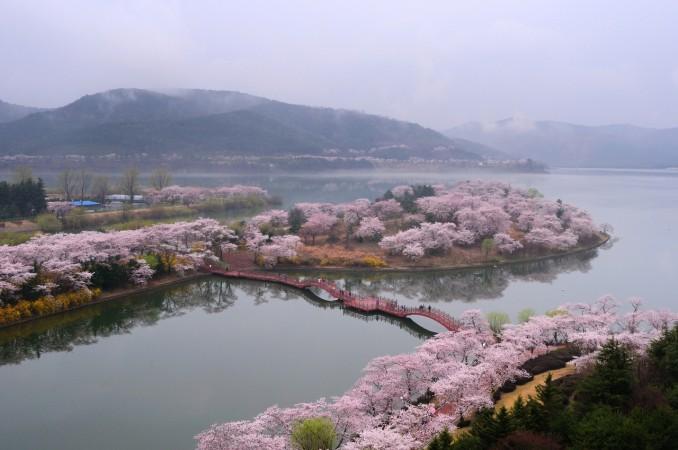
Gyeongju Cherry Blossom Festival - © Korea Herald
What to Do in Gyeongju
Visitors to Gyeongju can enjoy a range of activities that blend outdoor adventures with cultural experiences. Here are some suggestions:
- Explore Tumuli Park (Daereungwon Tomb Park): Visitors can stroll through Tumuli Park, where they will find 23 ancient burial mounds of Silla royalty. The grassy hillocks provide a surreal landscape, and guests can enter some of the tombs for a unique sensory experience. This site offers a deep connection to the history of the Silla Dynasty, making it a must-visit for history enthusiasts.
- Hike Namsan Mountain: Namsan Mountain is a treasure trove of historical relics and natural beauty. Visitors can hike various trails that lead to ancient Buddhist statues and temples nestled among the trees. The hike is not only a physical adventure but also an opportunity to discover hundreds of hidden treasures, including the famous Maitreya Buddha statue. This experience combines outdoor activity with cultural exploration.
- Visit Donggung Palace and Wolji Pond: Donggung Palace, once the royal residence of the Silla crown prince, is beautifully situated next to Wolji Pond. Visitors can explore the palace grounds and enjoy the serene beauty of the pond. The site is particularly stunning at night when the palace is illuminated, creating a magical reflection in the water. This is a perfect spot for photography and relaxation.
- Enjoy the Gyeongju Cherry Blossom Festival: If visiting in spring, don't miss the Gyeongju Cherry Blossom Festival, typically held in late March to early April. Visitors can walk among thousands of blooming cherry trees, enjoy live traditional music, and partake in picnics by Bomun Lake. The festival atmosphere is vibrant, making it a delightful cultural experience.
- Sip Traditional Gyeongju Rice Wine: After a day of sightseeing, visitors can unwind by trying gyodong beopju, a traditional Gyeongju rice wine. This clear, subtly sweet beverage is perfect for relaxing and reflecting on the day's adventures. Many local restaurants and bars offer this specialty, providing a taste of Gyeongju's culinary heritage.
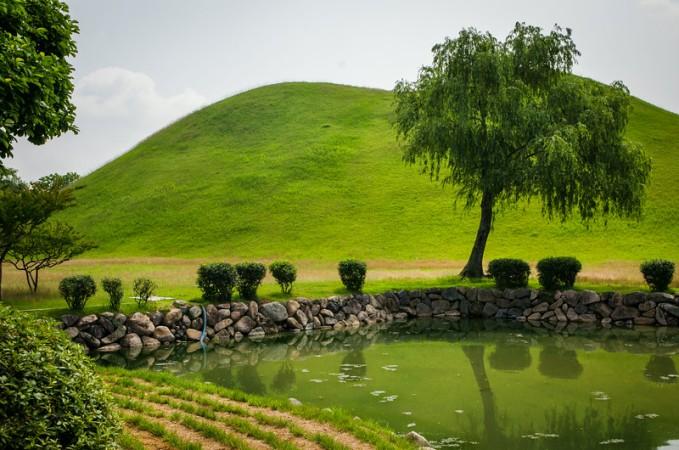
Daereungwon Tomb Park - © Andrew and Karen
Weather in Gyeongju: Best Time to Visit
Gyeongju experiences a temperate climate with distinct seasons, making it essential for travelers to understand the weather patterns when planning their visit. Here’s an overview of the average temperatures, rainfall, best times to travel, and other relevant weather information.
Average Temperatures
- Winter (December to February): Average highs range from 5°C to 9°C (41°F to 48°F). Average lows can drop to -5°C (23°F) in January.
- Spring (March to May): Average highs increase from 12°C (54°F) in March to 23°C (73°F) in May. Average lows range from 1°C (34°F) in March to 11°C (52°F) in May.
- Summer (June to August): Average highs peak at 29°C to 30°C (84°F to 86°F). Average lows are around 21°C (70°F) during these months.
- Autumn (September to November): Average highs decrease from 25°C (77°F) in September to 14°C (57°F) in November. Average lows range from 10°C (50°F) in September to 3°C (37°F) in November.
Best Time to Travel
The best times to visit Gyeongju are during spring (April to May) and autumn (September to October). During these months, visitors can enjoy mild temperatures, beautiful natural scenery, and fewer crowds. Spring is particularly famous for cherry blossoms, while autumn showcases stunning fall foliage.

Woljeonggyo Bridge - © Vanity Fair Italy
Essential Travel Information
Getting Around Gyeongju
- Public Buses: Gyeongju has a well-connected public bus system, with two main loop buses (Bus 10 and Bus 11) that cover major attractions. Bus 10: Known as the "Golden Line," it connects key sites such as Cheomseongdae, Donggung and Wolji Pond, and Bulguksa Temple.
- Taxis: Taxis are readily available and can be a convenient option for traveling within the city. Fares start at ₩2,800, with metered rates applying thereafter. There are no deluxe taxis in Gyeongju, making standard taxis the primary choice for visitors.
- Bicycle Rentals: Bicycles can be rented for a more leisurely exploration of the city, particularly along scenic routes around Bomun Lake and historical sites.
- Train Access: For those arriving from other cities, Gyeongju is accessible via the KTX high-speed train to Singyeongju Station, followed by a local bus or taxi to reach Gyeongju city center.
ATM and Banking Services
ATMs are widely available throughout Gyeongju, particularly in convenience stores, banks, and shopping areas. Most ATMs accept international cards, allowing visitors to withdraw cash easily. Banking hours typically run from 9 AM to 4 PM on weekdays, with some banks offering limited Saturday hours.
Where to Stay in Gyeongju
- Traditional Hanok Stays: For an immersive cultural experience, staying in a hanok (traditional Korean house) is a must. These beautifully preserved accommodations allow you to experience traditional Korean architecture and customs. These unique stays often feature traditional bedding, wooden interiors, and serene courtyards, providing a glimpse into ancient Korean living.
- Luxury Resorts: For those seeking comfort and luxury, Gyeongju has several upscale resorts. Offering premium amenities like spas, fine dining, and expansive views, these high-end stays provide the perfect retreat for relaxation after a day of sightseeing.
- Mid-Range Hotels: Gyeongju’s mid-range hotels offer a balance of affordability and comfort. Many are conveniently located near cultural sites making it easy for visitors to explore the city’s history. These hotels typically provide modern amenities like Wi-Fi, breakfast, and comfortable rooms at a reasonable price. They are great for travelers who want a comfortable stay without breaking the bank.
Articles for you

Explore Yala National Park - Sri Lanka Travel, Asia
Tucked away in Sri Lanka’s southeastern corner, Yala National Park is where wild nature meets deep tradition. Known worldwide for its leopard population, the park is also home to elephants, sloth bears, crocodiles, and hundreds of bird species. Beyond wildlife, Yala opens doors to a cultural landscape dotted with ancient temples, Buddhist ruins, and coastal villages. For travelers seeking more than just a safari, Yala offers a chance to explore eco-tourism, local communities, and sacred heritage sites.
Population: The Yala National Park area doesn’t have a human population.
Economy: The economy around Yala National Park thrives on a blend of eco-tourism, agriculture, and local services. Safari tours, eco-lodges, and cultural experiences drive steady income for nearby towns like Tissamaharama and Kataragama, supporting thousands of families.
Landmarks: Famous for Block I of Yala and wildlife encounters, including elephants, sloth bears, crocodiles, and exotic bird species.

Explore Galle - Sri Lanka Travel, Asia
Nestled on Sri Lanka’s southern coastline, Galle is a vibrant city where history meets the sea. Its cobbled streets, colonial architecture, and serene beaches make it a must-visit destination for travelers seeking a blend of culture, adventure, and relaxation. A UNESCO World Heritage site, Galle captivates visitors with its Dutch Fort, bustling markets, and friendly locals. Whether you’re exploring the ramparts at sunset or savoring fresh seafood by the shore, Galle promises an unforgettable journey into Sri Lanka’s heritage.
Population: Approximately 113,000 in 2023.
Economy: Galle’s economy thrives on tourism, trade, and fisheries. The city’s historic fort, colonial architecture, and coastal charm draw thousands of international visitors each year, making tourism its main economic driver. Fishing remains vital for local livelihoods, supplying fresh seafood across the region.
Landmarks: Famous for the Galle Fort, Dutch Reformed Church & Maritime Museum, and Unawatuna Beach.

Explore Bentota - Sri Lanka Travel, Asia
Nestled along Sri Lanka’s southwestern coast, Bentota is a tropical paradise that blends golden beaches, vibrant culture, and thrilling adventures. Famous for its calm waters, luxury resorts, and scenic river estuary, Bentota has become a top destination for travelers seeking both relaxation and authentic experiences. From serene beach walks at sunrise to adrenaline-pumping water sports, this coastal town offers a perfect balance of leisure and exploration. With its proximity to Colombo and Galle, Bentota is easy to reach, making it an ideal stop for both short escapes and extended holidays.
Population: Approximately 37,000 in 2023.
Economy: Bentota’s economy thrives mainly on tourism, which drives local businesses such as hotels, restaurants, and wellness retreats. The town also benefits from fishing, coconut cultivation, and handicrafts like wood carving and batik textiles. Many residents rely on the growing demand for water sports and Ayurvedic treatments, making tourism the backbone of both income and employment in the area.
Landmarks: Famous for Bentota Beach, Bentota River Safari, and Kande Vihara Temple.

Explore Mirissa - Sri Lanka Travel, Asia
Mirissa is a charming coastal town on Sri Lanka’s southern shoreline. Known for its golden beaches, turquoise waters, and vibrant marine life, it has become a must-visit stop for travelers exploring the island. Many come for whale watching, surfing, and sunset views at Coconut Tree Hill, but Mirissa offers much more than postcard beauty. The fishing boats you see anchored by the bay carry generations of stories. Local traditions, delicious cuisine, and a laid-back rhythm of life shape every visitor’s experience.
Population: Approximately 4,700 in 2023.
Economy: Mirissa’s economy is largely shaped by its coastal location. Fishing has long been the backbone of local livelihoods, with generations relying on the Indian Ocean for income. In recent decades, tourism has become the main driver of growth, thanks to whale watching, surfing, and beachside hospitality.
Landmarks: Famous for Mirissa Beach, Coconut Tree Hill, and Parrot Rock Bridge.

Explore Nuwara Eliya - Sri Lanka Travel, Asia
Tucked away in the Central Highlands of Sri Lanka, Nuwara Eliya is often called “Little England”. With its rolling tea plantations, cool misty mornings, and colonial charm, this mountain town feels like a step into another world. Travelers come here to breathe fresh air, walk through flower gardens, sip the finest Ceylon Tea, and enjoy a pace of life far from the island’s busy cities. Whether you’re drawn by scenic landscapes, heritage architecture, or the warmth of its people, Nuwara Eliya is a destination that blends nature, culture, and history in perfect harmony.
Population: Approximately 781,000 in 2023.
Economy: Nuwara Eliya’s economy thrives mainly on tea production, as it sits in the heart of Sri Lanka’s central highlands, famous worldwide for Ceylon Tea. The city also benefits from a growing tourism industry, attracting visitors with its colonial charm, cool climate, and scenic landscapes.
Landmarks: Famous for Gregory Lake, Hakgala Botanical Garden, and Victoria Park.

Explore Sukau - Malaysia Travel, Asia
Nestled on the banks of the Kinabatangan River in Sabah, Malaysian Borneo, Sukau is a destination where wildlife, culture, and conservation come together. Known as one of Asia’s top spots for river safaris and eco-tourism, this quiet village offers a front-row seat to encounters with Bornean orangutans, pygmy elephants, proboscis monkeys, and exotic birdlife.
Population: Approximately 1,400 in 2019.
Economy: Sukau’s economy is shaped by its riverine location and natural resources. Traditionally, the Orang Sungai community relied on fishing, small-scale farming, and forest gathering for their livelihood. Today, the village has shifted toward eco-tourism, with river cruises, jungle trekking, and homestays providing income.
Landmarks: Famous for the Kinabatangan River cruises, Gomantong Caves, and Ox-bow lakes and wetlands.
